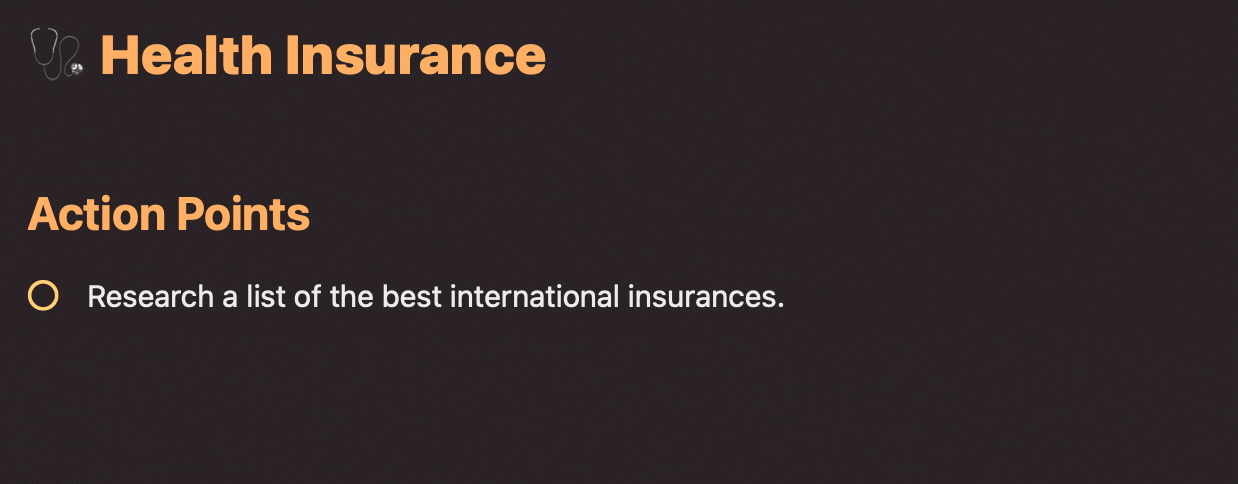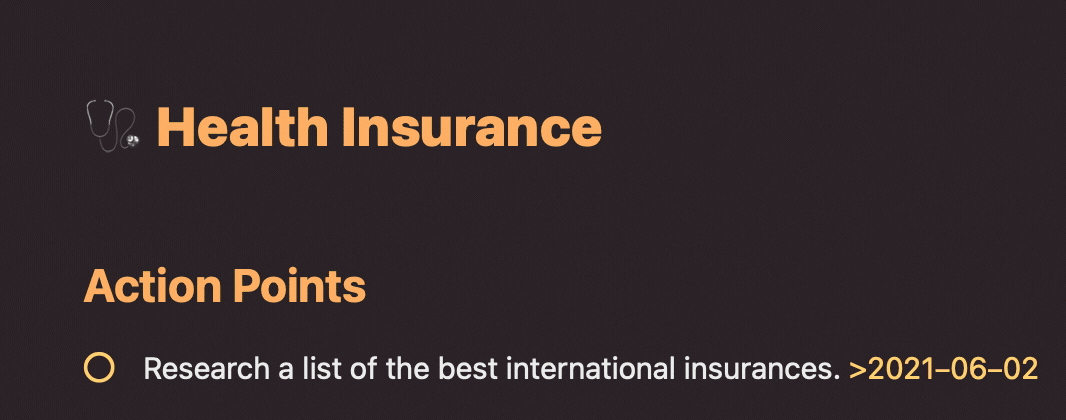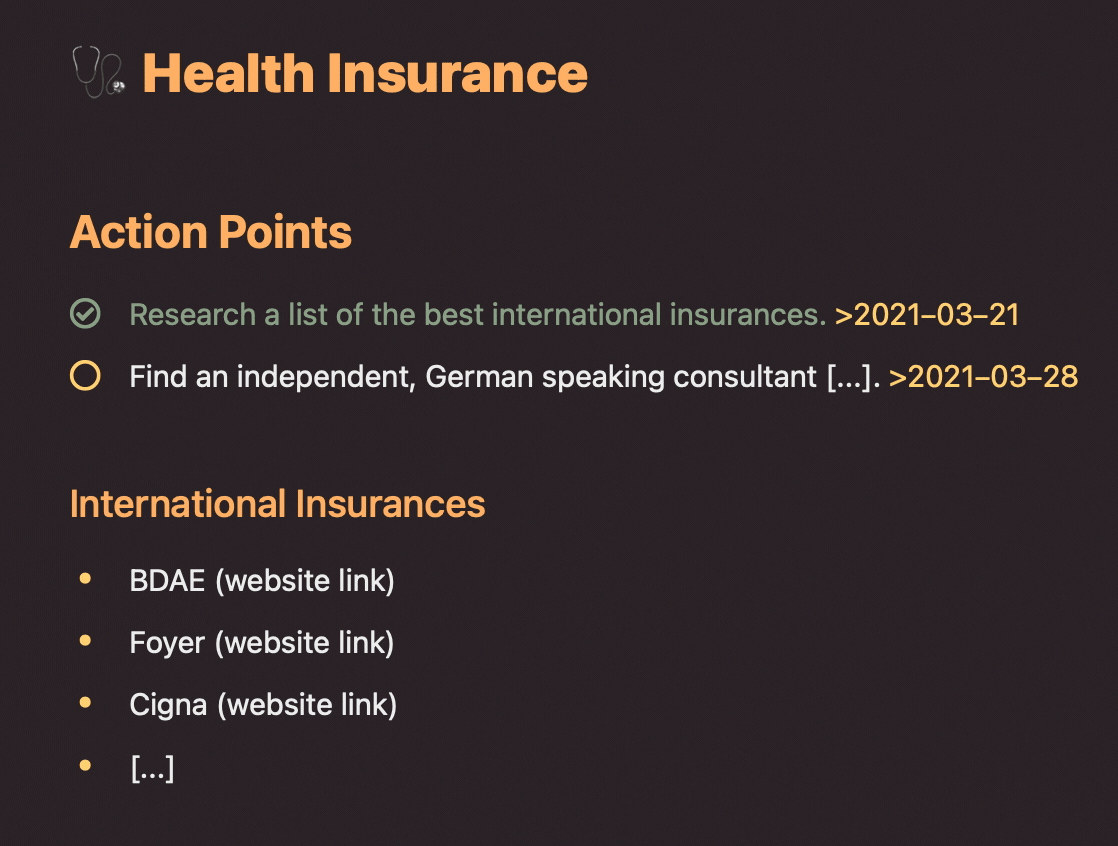How I manage parallel projects and stay sane
In this article, I want to share with you how I managed an actual parallel project and some of the behavioral science behind that.

Generally speaking, you shouldn’t multi-task and work on multiple things, but sometimes you can’t avoid it. Especially when the parallel “project” is not work-related, and you are forced to do something about it due to an upcoming deadline - these are the worst and most stressful projects. In this article, I want to share with you how I managed an actual parallel project and some of the behavioral science behind that.
The problem
In my case, I had to change my health insurance. This is something I know very little about, and I don’t enjoy dealing with it. However, it can have terrible financial consequences if I make a mistake. I could pick the wrong provider or don’t quite understand the conditions and believe something is covered although it isn’t.
Besides researching new health insurance, talking to brokers, and understanding what’s important, I also had to update my driving license (in a foreign country with lots of bureaucracy)—another not-so-fun project.
These two “projects” (which I don’t want to do but have to) added to my regular work of running and developing NotePlan (and all the small things I need to keep track of in a business) added some unnecessary stress and anxiety.
I was apprehensive about my health insurance. I had to understand the conditions of different providers properly, what is covered, and what is not, and what to do about my old insurance. On one side, I want to limit my expenses. On the other side, the insurance should cover cases that would be otherwise catastrophic to my finances.
At first, I didn’t structure any of it in a written way. While doing my regular work - mostly coding or talking to users - I often got distracted by worrying about what I should do next about my problems. I just had one note with some information I created long ago as I got aware of the problem. But back then, it wasn’t urgent. So I delegated the work to my future self.
The solution
Then I did something straightforward, which immediately calmed down my mind and gave me clarity:
- I created a new note, gave it a proper title,
- described the issues in full, the questions I have, what makes it so difficult to close,
- and listed minimal but concrete action points.
I know that small, concrete tasks make it incredibly easy to make progress. They are not intimidating, and I know I can do them quickly. James Clear applied this principle to habits.
The third law in his behavioral framework which he uses to explain “How to create a good habit” is to “Make it easy”. Breaking down a task into something that takes only a few minutes to do is exactly that. It makes it easy to start. The fourth law “Make it satisfying” comes into effect as well when I use tasks which can be crossed out (on paper) or toggled as complete (digital), which creates a satisfying feeling. This feeling helps to keep going as well, because I want to complete the next task.
The other effect playing a crucial role here is the fact that I wrote it down in the first place. I already know from journaling (a daily habit I maintain since years) how incredibly effective it is. While writing, you are forced to slow down and structure your thoughts.
Writing down things also beats the Zeigarnik Effect, where “thoughts of the unfinished work continue to pop into your mind even when you’ve moved on to other things”. In the best case scenario it distracts you doing your regular tasks. At it’s worst it keeps you up at night. If I write down my complete thoughts and that in a safe place where I know it won’t slip through the cracks, I trick my brain into thinking it’s “handled”.
This leads us to the final puzzle piece. Just writing it down is often not enough - for me at least. Especially, if I got quite a few things going on. I need to schedule at least the first task, so it will pop up somewhere (other than my mind) and remind me to do it. If we again compare this to James Clear’s “Four Laws of Behavior Change”, scheduling the task or creating a reminder is a way to “Make it obvious” (first law).
That’s what I did by attaching a date to the task (using NotePlan’s >date syntax).

If I would use a traditional paper bullet journal, I would copy the task to a day in the future. NotePlan will display the scheduled task on the given day.

In short
I made a plan.
I know that “No plan survives first contact with the enemy” and is usually constantly updated. But here, the idea is not to make the perfect plan but to write it down and always know what to do next to make progress. This makes me feel in control. In this sense, my note is not static, and I keep adding and changing things. From one task, the next will emerge.
So, once I finished the task, such as “Research a list of the best international insurances,” I captured the new information in the same note under a new heading, and I immediately wrote down the next action point and scheduled it to another day.
That’s also where a digital note-taking system is extremely convenient, because you can edit the existing text, elaborate, delete or even collapse headings you don’t need to see right now. A paper bullet journal would struggle at this point.

Using this method - writing down a plan with action points and scheduling always the next one - things can not easily fall between the cracks. Worst case, I re-schedule the task (if I can’t finish it that day). If I keep postponing it too often, I know I have to break it down further (means the task is not easy enough). All this gives me the feeling of having a “safe system” I can trust.
Writing everything down and keeping things up to date is incredibly relieving as your mind doesn’t have to keep anything on the radar. And for this to work, you need to trust your system.
One more extra tip
If you have several of such annoying “side-projects” like I had, you can collect them in a single note by writing each one under it’s own heading and fold the heading (at least in NotePlan) to hide text you don’t need to see now.
Can one app really replace your entire productivity stack?
NotePlan did. Try NotePlan free for 7 days to learn how